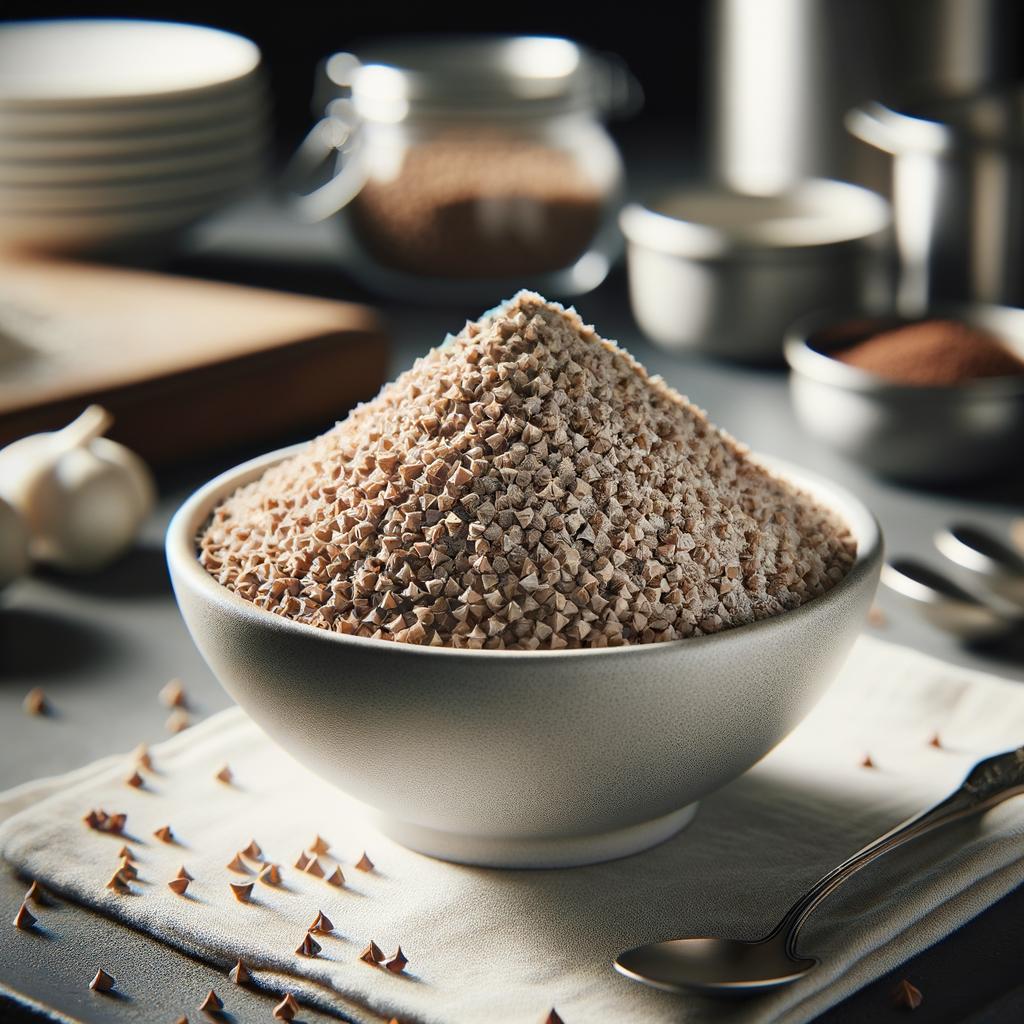Buckwheat Flour

Description
Buckwheat flour, a beautiful gem in the culinary world, is a hearty, robust, and versatile ingredient. Its appearance is a rustic, earthy brown, reminiscent of the fields where its parent plant, buckwheat, sways gently in the breeze. The texture is fine and soft, akin to a well-woven tapestry, while its flavor profile is distinct and bold, carrying a nutty, slightly bitter undertone that sets it apart from its wheat-based counterparts. What makes buckwheat flour truly unique is its gluten-free nature, making it a beloved choice for those with gluten sensitivities or anyone seeking a nutritious alternative to traditional flours.
Primary Uses
Buckwheat flour is a culinary chameleon, adapting to a wide variety of dishes across different cuisines. In Russian and Ukrainian cooking, it is the key ingredient in blini, a type of thin pancake. In Japan, it is used to make soba noodles, a staple in their cuisine. The French make use of this versatile flour in their traditional galettes, a type of thin, large pancake. Beyond its culinary uses, buckwheat flour has also been used in traditional medicine, particularly in Asia, where it is believed to improve blood circulation and heart health.
History
The history of buckwheat flour is as rich and textured as the ingredient itself. Buckwheat, the plant from which the flour is made, has been cultivated for over 8,000 years, with its origins tracing back to Southeast Asia. From there, it journeyed across continents, finding favor in Europe during the Middle Ages, and eventually reaching North America with European settlers. Over the centuries, its popularity has waxed and waned, but recent years have seen a resurgence in its use, as the world rediscovers its health benefits and versatile nature. Folklore tells us that buckwheat was considered a 'humble grain', often associated with simplicity and sustenance, and it was often used in ritual offerings to the gods in ancient cultures.
Nutritional Information
Buckwheat flour is a nutritional powerhouse, boasting a high content of fiber, protein, and a range of essential vitamins and minerals, including B-vitamins, magnesium, and manganese. Its consumption is associated with numerous health benefits, such as improved heart health, better blood sugar control, and enhanced digestion. Compared to wheat flour, buckwheat flour has a lower glycemic index, making it a healthier choice for those managing diabetes. Its rich, unique flavor and nutritional superiority make buckwheat flour a wonderful addition to any pantry, telling a story of ancient traditions, global journeys, and enduring health benefits.

